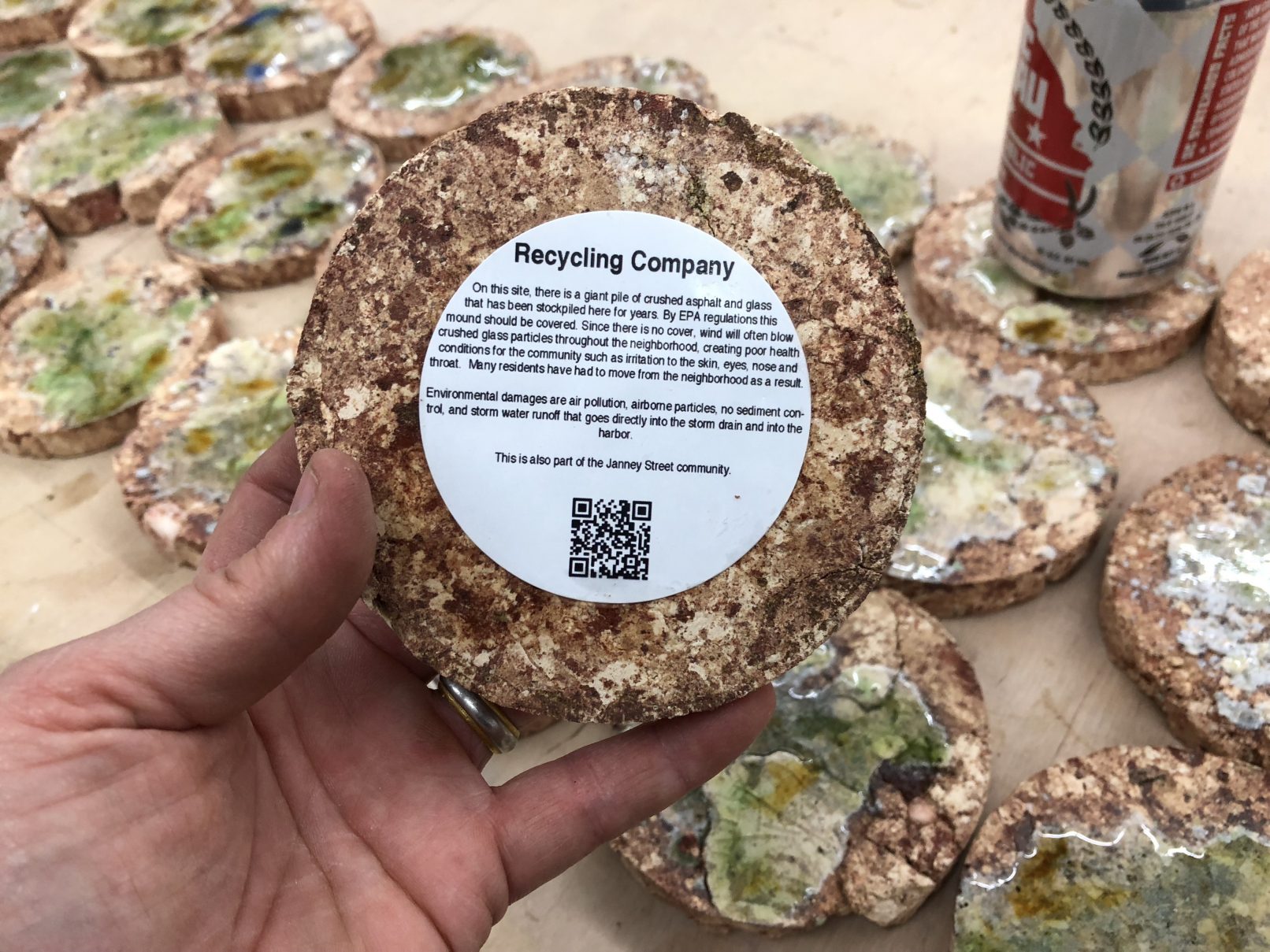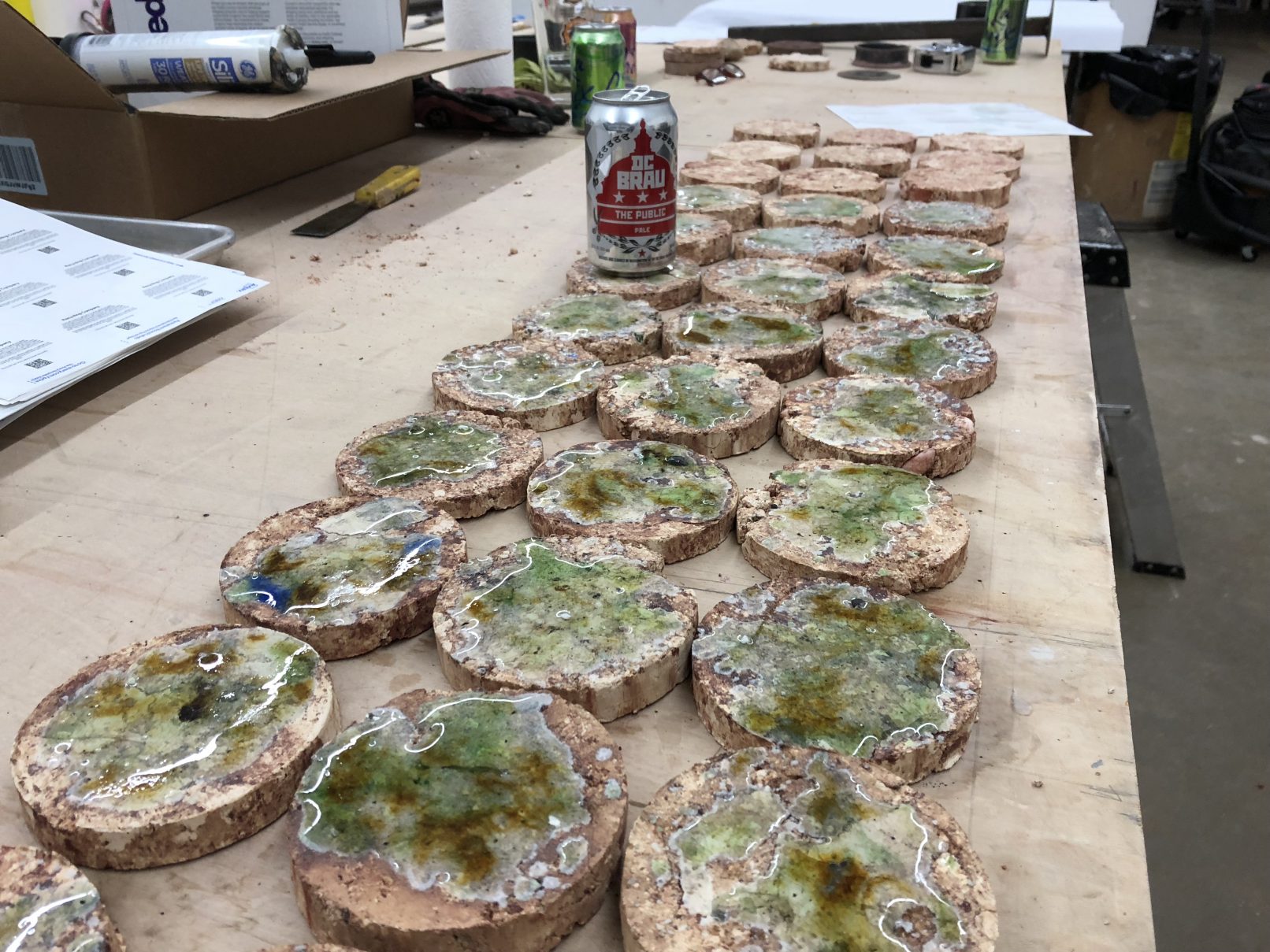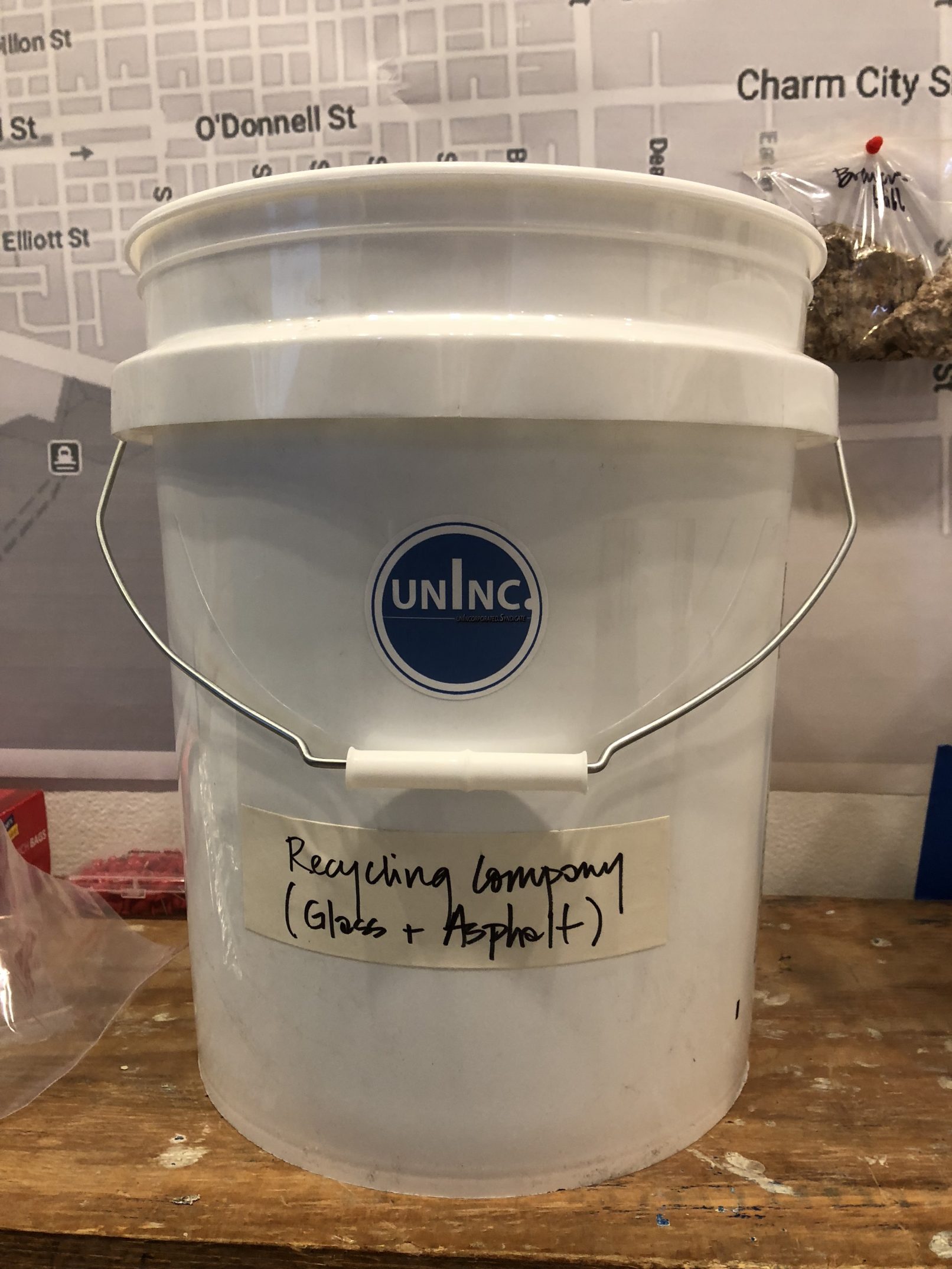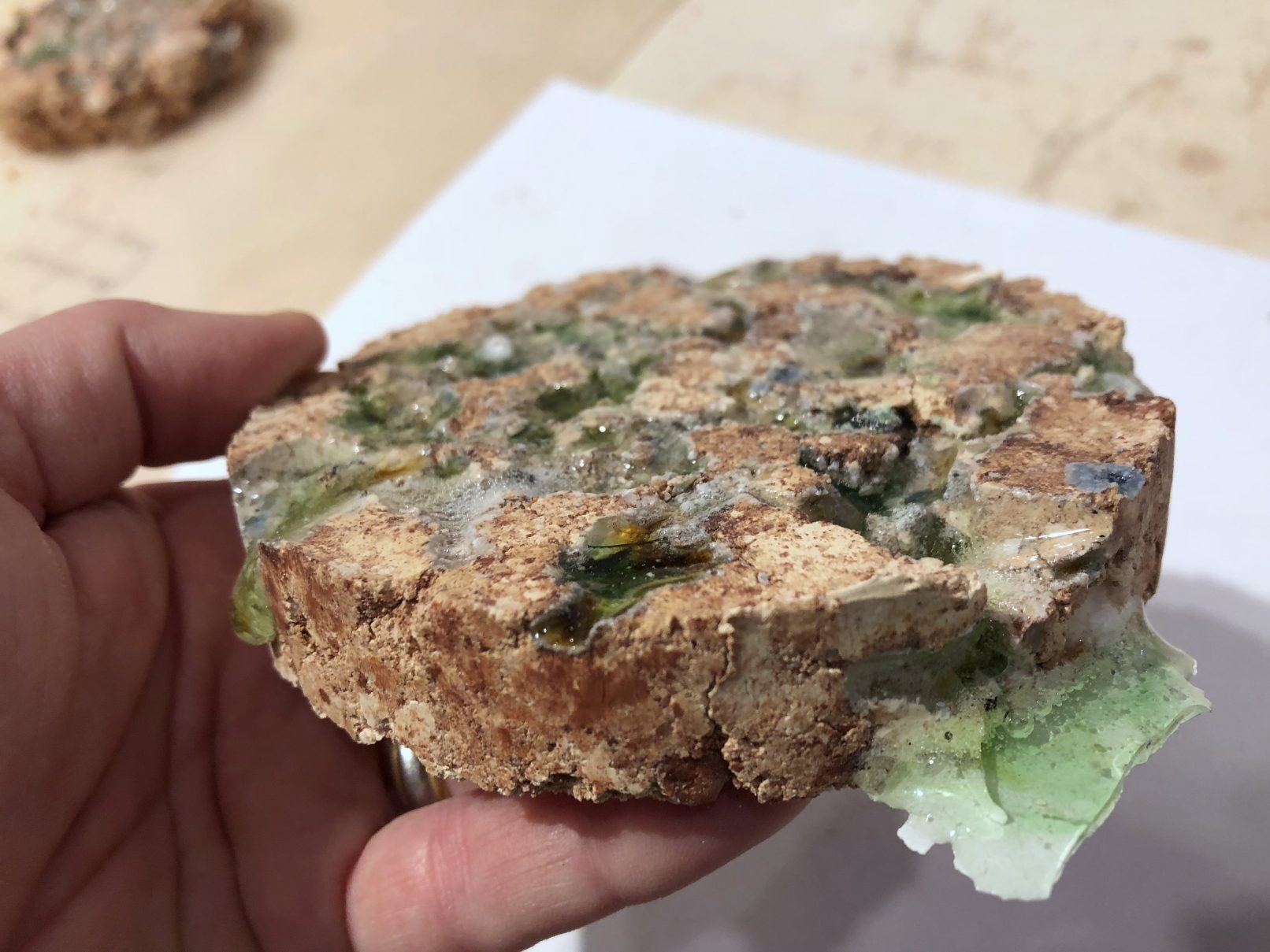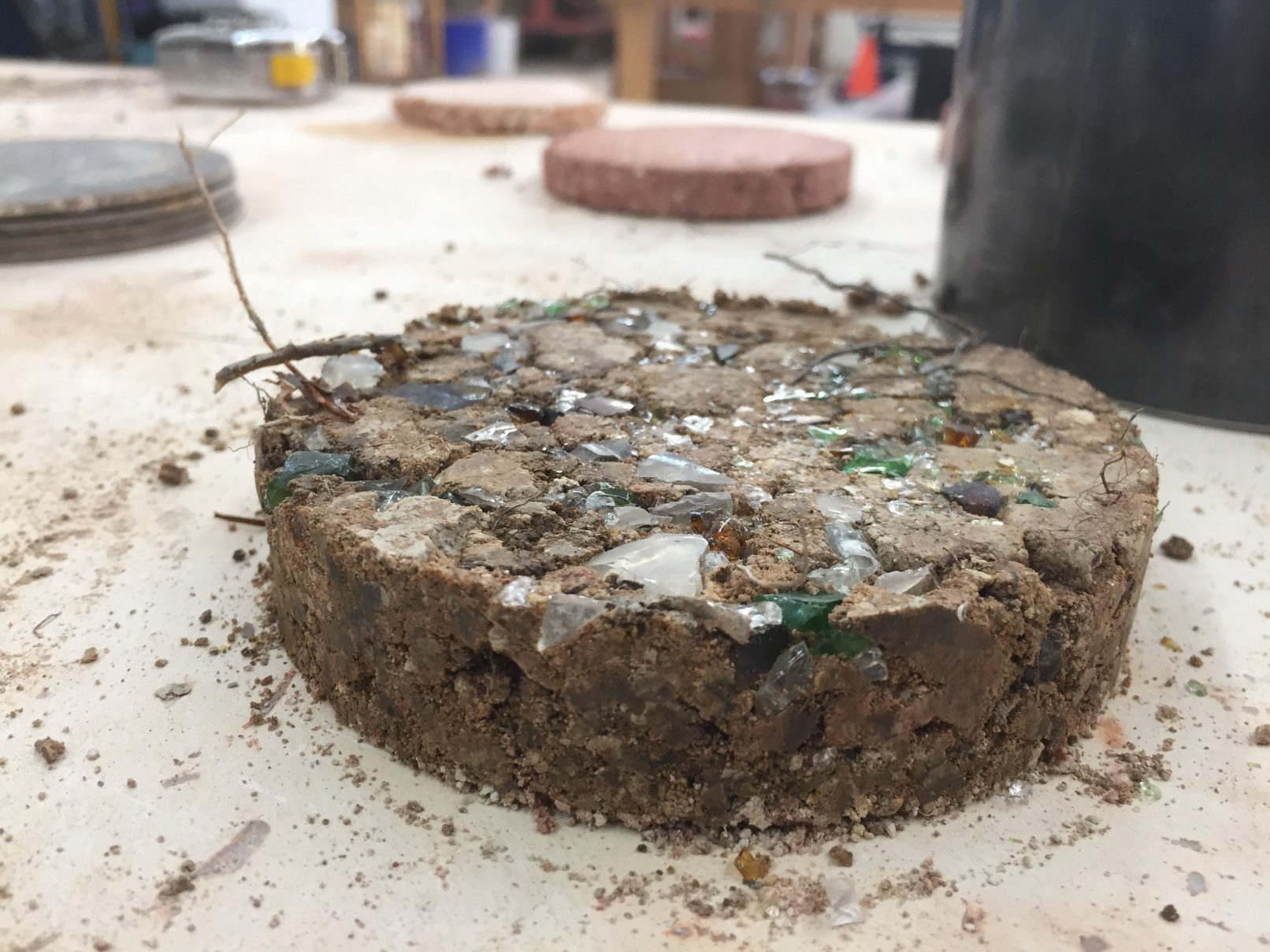Collaborative
Project: Soils, The Art Extension Service, UnInc. and more
2001 saved blank
Press
Baltimore Sun
Artist's notes
I proposed to create a wall relief made from local earth, using mapping imagery of the site as the underlying design.
The clay – The ground would be open for a short time during construction, then sealed up again when construction was complete. A window of time to learn about what is underneath, and opportunity to create in the hotel a permanent window into what is down there. Clay is the most abundant material on the face of the earth. It is common, underfoot, overlooked. My job as an artist is to ask people to take a closer look, to show them the beauty in this ordinary material.
The map – Viewers can have their own sense of discovery. Find themselves in the landscape, helps foster connections to the landscape, to the earth, to the water. The more you learn about where you are, the more you appreciate it.
I found that the clay on the MGM site is beautifully variegated-layered and rippled with at least two different grays, plus pinks, rose, red, a couple oranges, some golds, tan, brown and a tiny bit of white. Beautiful, but challenging. So much going on in every small amount…challenge was how to use it in a large composition that had impact from both far away and close up.
One of my favorite discoveries in the course of working on the project: The piece was huge in in my studio, taking up so much space that I was forced to walk on it or to continually re-create bridges to navigate the studio and to work on the piece. I chose to walk on it. It immediately lost its preciousness. I saw how continued walking and traveling certain paths began to shape, affect and actually create the work. The “down to earth” approach became integral to the overall concept. Worn down pathways, trails, boot prints…imparting human scale.
Notice the large, colorful chunk of clay, placed at the bottom center of the composition. It contains all the colors of clay represented in the ground here. After a site visit earlier this year, I saw construction workers had exposed a beautiful vein of clay at the foot of the property. I pulled over, described what I was up to, and the workers helped me load up my truck with large chunks, still soft and wet from the ground. Months later, I noticed one worker’s fingermarks preserved in the surface. I realized it could act as a kind of visual and conceptual keystone, and I placed it where it would be at eye level and invite the viewer in.
The workboot prints, twisted mason line, bent rebar, survey marker, chalkline dust… These things suggest human touch or intervention and impart a sense of scale. I love that these things would usually be considered trash. With a slight shift of focus, the bent rebar visually rhymes with the branch. The blue plastic ribbon of the survey marker talks to the blue chalkline residue. These things become important parts of the composition both visually and conceptually. One can recognize the scale of one’s own body in relation to this work.
At the same time as one is aware of the one-to-one human scale, the cracked earth suggests an aerial view as if one were viewing the landscape from an airplane. I love the back and forth, the shift of perspective from macro- to micro- and back again.
As I was designing this composition, I wanted it to have impact on first viewing, as a large and grand statement, but I am extremely fond of the small details and poetic passages that reveal themselves over time, rewarding close attention. Small compositions within the larger work. Details showing process, different states- wet and dry, tools and hands. An addition of a small scattering of gold clay dust on a large gray background makes all the difference.
I made this piece with MGM’s guests in mind for sure, but also and especially for the people that work there, who will see it every day for years. If they can enjoy seeing it over long term, then I feel like I succeeded.
When you can find beauty in the ordinary, it possible to be satisfied with your life. Japanese potters put gold leaf on the crack in the teabowl. Instead of hiding the flaws, what if you turn up the volume and celebrate it? Cracks and imperfections are where light and breath get to come in.
